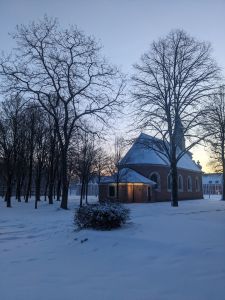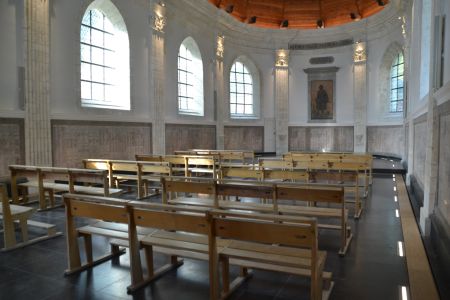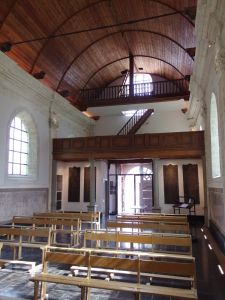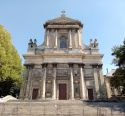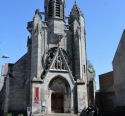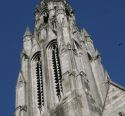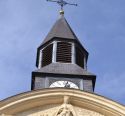Chapel | 1676 | Classical | Catholic Church



Map
Opening hours
01 January - 31 December
Mon 10.00 - 18.00
Tue 10.00 - 18.00
Wed 10.00 - 18.00
Thu 10.00 - 18.00
Fri 10.00 - 18.00
Sat 10.00 - 18.00
Sun 10.00 - 18.00
Description
It was desecrated between 1830 and 1866 and lost its religious function to be used for military purposes (drill hall, artillery depot, shop).
In 1867, Napoleon III had the entire décor altered during a major renovation campaign. A new allegorical and military décor was sculpted in the Flemish style. This profusion of ornamentation (rosettes, trophies, garlands, etc.) contrasted sharply with the sobriety of the original classical style. From then on, the chapel took on a composite appearance.
Having suffered during the First World War, it was subsequently restored and became a memorial in honour of the dead of the Engineers. Still consecrated, it has been listed as a historic monument since 1920. The Arras urban community acquired it in June 2010.
Translated with DeepL.com (free version)
Photos
Remarkable elements
The front
In the upper register, a high window is flanked by two Corinthian columns that support a curved pediment decorated with a Virgin and Child against a background of a sky filled with angels. Beneath the Virgin is the inscription "Mater Dei Ora Pro Nobis", which means "Mother of God, pray for us".
The pediment is flanked by scrolled fins, topped with fire pots and decorated with foliage. The volutes are adorned with medallions bearing the effigy of Louis XIV, the builder of the chapel, on the left, and probably Napoleon III, its restorer, on the right. According to historian Robert Bornecque, this portrait was hammered out in 1870.
Beneath the entablature are two medallions showing, on the left, a cross on a crown of palms and olive trees and, on the right, a sword on a crown of oak and laurel leaves.
In the centre, a niche flanked by two columns and scrolls adorned with foliage, and crowned by two palms entwined with two angels' heads, housed a statue of Saint Louis that has now disappeared.
On either side of the portal, trophies of arms evoke, on the left, the reign of Saint Louis and, on the right, the Second Empire.
Translated with www.DeepL.com/Translator (free version)
Commemorative plaques
4,000 soldiers' names are engraved on white marble plaques set into the base, making the chapel a true memorial to the dead of the Engineers. A few black marble plaques honour other regiments, those who died in 1870 and the governors of the area.
Translated with www.DeepL.com/Translator (free version)
The painting by Lucien-Paul Pouzargues
In the centre of the apse, a painting by Lucien-Paul Pouzargues (1878-1957) depicts a Poilu, a reminder of the sacrifice made by these men during the Great War.
Translated with www.DeepL.com/Translator (free version)
The nave
The rectangular nave, surmounted by a panelled vault, ends in a cul-de-four apse. Neoclassical in style, its walls are punctuated by Corinthian pilasters topped by a straight entablature. These pilasters and the tribune covering the entrance are the only interior ornamentation.
Translated with www.DeepL.com/Translator (free version)




